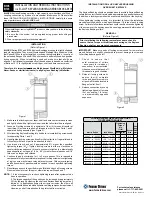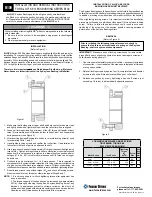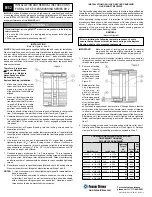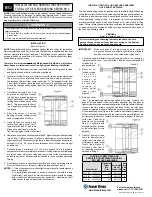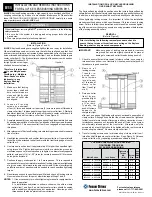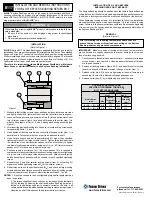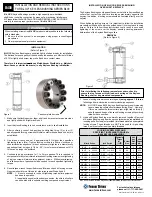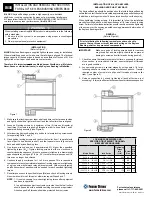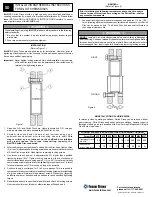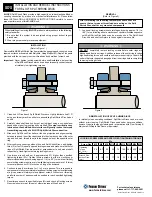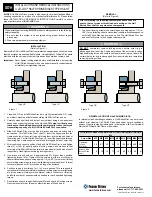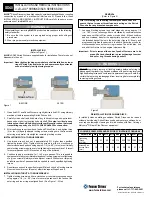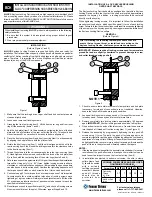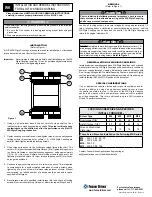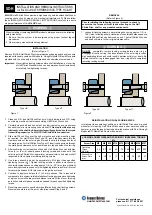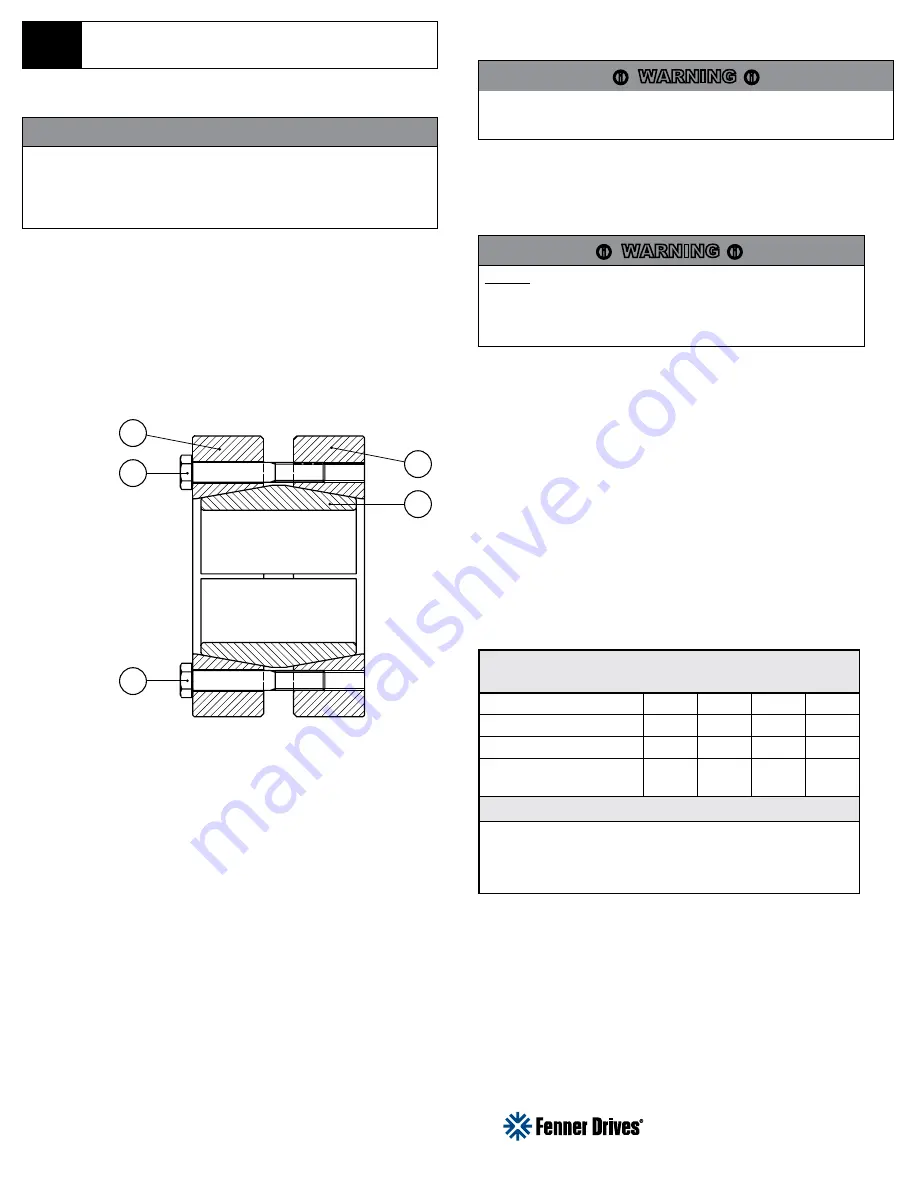
www.fennerdrives.com
For technical assistance,
please call +1-717-665-2421
WARNING
Please follow these INSTALLATION AND REMOVAL INSTRUCTIONS
carefully to ensure proper performance of this B-LOC
®
unit.
INSTALLATION
(Refer to Figure 1)
B-LOC
®
WK Rigid Couplings are supplied ready for installation. For increased
torque transmission, see Special Considerations.
Important:
Never tighten locking screws before shaft installation, as the WK
Rigid Coupling inner ring (3) can be permanently deformed even
at relatively low tightening torques.
1. Using a non-petroleum based solvent, carefully clean shafts of any
lubricants prior to mounting coupling on shafts.
This step is critical, as any
contaminants on the shafts may alter the performance of a B-LOC
®
WK Rigid Coupling connection.
2. Center coupling over shaft ends. Hand-tighten three or four equally spaced
locking screws (4) assuring outer collars (1, 2) of WK Rigid Coupling are
parallel. Hand-tighten remaining locking screws.
3. Use a torque wrench set to the overtorque valued listed in the chart. This
value is ~5% higher than specified install torque, (Ma). Tighten locking screws
in either a clockwise or counterclockwise sequence, using approximately
1/4 (i.e., 90°) turns (even if initially some locking screws require a very low
tightening torque to achieve 1/4 turns) for several passes until 1/4 turns can
no longer be achieved.
4. Continue to apply overtorque for one to two more passes. This is required
to compensate for a system-related relaxation of locking screws since
tightening of a given screw will always relax adjacent screws. Without
overtorquing, an infinite number of passes would be needed to reach
specified install torque.
5. Reset torque wrench to specified install torque (Ma) and check all locking
screws. No screw should turn at this point, otherwise repeat Steps 4 and 5.
REMOVAL
(Refer to Figure 1)
Prior to initiating the following removal procedure, check to ensure
that no torque or thrust loads are acting on the WK Rigid Coupling,
shaft or any mounted components.
Loosen all locking screws in several stages by using approximately 1/2
turns, following either a clockwise or counterclockwise sequence, until the
WK Rigid Coupling can be moved on the shafts. The WK Rigid Coupling will
return to its original clearance fit.
WARNING
DO NOT
completely remove locking screws (4) before outer collars (1, 2)
are disengaged from inner ring (3). A sudden release of the outer collars
involves high separating forces and could result in permanent injury or
death.Be certain that outer collars are disengaged from inner ring before
completely removing locking screws.
Refer to Figure 1.
LOCKING SCREW SIZES & SPECIFIED
INSTALL TORQUE M
a
Screw Type
M6
M8
M10
M12
Overtorque (ft lb)
9.1
23
46
78
Install Torque (ft lb)
8.7
22
44
74
Wrench Size Across
Flats (mm)
10
13
16
18
These Screw Sizes Are Installed on the Following WK Series:
M6
– WK 15, 20, 25, 30
M8
– WK 40, 50, 60
M10
– WK 70
M12
– WK 80, 90, 100
Figure 1
4
4
3
1
2
Contact Fenner Drives Applications Engineering at
ae@fennerdrives.com for additional details.
©2012 Fenner Drives B-PR-021 9/17/2012
INSTALLATION AND REMOVAL INSTRUCTIONS
FOR B-LOC
®
WK RIGID COUPLING
WK
WARNING
When installing or removing
B-LOC
®
products, always adhere to the following
safety standards:
1. Be sure that the system is de-energized using proper lockout/tagout
procedures.
2. Wear proper personal protective equipment.
REINSTALLATION OF WK RIGID COUPLINGS
In relatively clean operating conditions, WK Rigid Couplings can be reused
without prior cleaning. WK Rigid Couplings used under severe conditions,
however, require thorough cleaning. Relubricate screws and tapers with
Dow Corning
®
Molykote
®
G-n Metal Assembly Paste or equivalent. Lightly
coat the remainder of the unit with standard machining oil. Upon doing so,
install following INSTALLATION portion of this document.
SPECIAL CONSIDERATIONS
If your application requires increased torque transmission and/or
thrust, in addition to using a non-petroleum based solvent to clean
the shafts (as stated in step 1), the bore of the WK Rigid Coupling
needs to be cleaned with a non-petroleum based solvent to produce
an oil free connection. This in turn will result in up to a 20% increase in
Mt and Th performance values.


